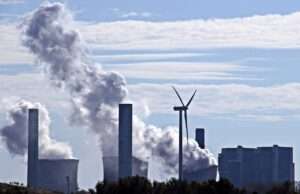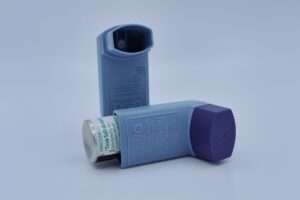|
Getting your Trinity Audio player ready...
|
Introduction
Smog health impact in the modern urban landscape, where skylines are marked by towering buildings and highways humming with activity, a hidden threat lurks in the air—smog. While often dismissed as a mere inconvenience, smog is far more insidious, casting a shadow over our health. In this exploration, we delve into the intricate interplay between smog and health, dissecting the consequences that unfold with every breath.

Several countries around the world experience severe smog-related issues, impacting both the environment and public health. The degree of smog varies based on factors such as industrialization, vehicular emissions, geographical features, and meteorological conditions. Here are some countries that have been notably affected by smog:
- China:
- China has faced significant challenges with smog, particularly in major cities like Beijing. Industrial activities, high population density, and reliance on coal as a primary energy source contribute to elevated levels of air pollution.
- India:
- Cities in India, including New Delhi, regularly experience episodes of severe smog, especially during the winter months. Vehicular emissions, industrial pollution, and agricultural burning are major contributors.
- Pakistan:
- Like India, Pakistan encounters smog-related issues, particularly in cities such as Lahore and Karachi. Agricultural burning, industrial emissions, and vehicular pollution contribute to poor air quality.
Smog Health Impact: Unmasking the Dangers
Understanding Smog: To comprehend the health impact of smog, we must first dissect its composition. Smog, a fusion of smoke and fog, harbors a sinister blend of pollutants, including particulate matter, ozone, and a cocktail of toxic gases. These components collectively form a toxic stew that hangs in the air we breathe, infiltrating our respiratory systems and permeating our daily lives.
Respiratory Problems from Smog: One of the most immediate and visible consequences of smog exposure is the onset of respiratory problems. Particulate matter, the microscopic particles suspended in the air, infiltrates deep into our lungs, triggering inflammation and irritation. This assault on the respiratory system can lead to conditions such as bronchitis and aggravated asthma.
Asthma and Smog: For those already grappling with asthma, smog acts as a potent trigger, exacerbating symptoms and heightening the risk of asthma attacks. The combination of airborne pollutants and the susceptibility of asthmatic individuals creates a perfect storm within the respiratory passages, compromising airway function and making breathing a challenging endeavor.
Cardiovascular Risks of Smog: A Silent Strain on the Heart
Particulate Matter Health Effects: Beyond the respiratory system, smog’s impact extends to the cardiovascular system. Particulate matter, consisting of tiny particles released from vehicle exhaust and industrial emissions, infiltrates the bloodstream, contributing to inflammation and oxidative stress. This sets the stage for cardiovascular risks, including hypertension and an increased susceptibility to heart attacks.
Ozone Exposure Health Risks: Ozone, a key component of smog, further compounds the cardiovascular risks. Prolonged exposure to elevated ozone levels has been linked to an increased incidence of cardiovascular events, posing a silent yet pervasive threat to heart health.
Environmental Hazards of Smog: A Broader Canvas of Consequences
Air Quality and Health: The quality of the air we breathe is intricately tied to our well-being. Smog diminishes air quality, subjecting us to a barrage of pollutants that compromise the delicate balance of our respiratory and cardiovascular systems.
Smog-Related Respiratory Infections: As smog weakens the respiratory defenses, individuals become more susceptible to respiratory infections. The compromised state of the respiratory tract becomes a breeding ground for pathogens, heightening the risk of infections that range from common colds to more severe respiratory illnesses.
The Ripple Effect: Beyond the Lungs and Heart
Lung Function Deterioration: Long-term exposure to smog has profound implications for lung function. Studies indicate that individuals consistently exposed to high levels of smog experience a gradual decline in lung function over time. This deterioration, often unnoticed in its early stages, can pave the way for chronic respiratory conditions that manifest later in life.
Eye Irritation Due to Smog: The eyes, too, bear the brunt of smog’s assault. Irritation, redness, and discomfort are common complaints among those exposed to elevated levels of smog. The fine particulate matter and pollutants in the air settle on the delicate surface of the eyes, triggering these symptoms and underscoring the pervasive nature of smog’s impact.
Beyond the Individual: Public Health and Environmental Health Risks
Weakened Immune System from Smog: A lesser-known consequence of smog exposure is its role in compromising the immune system. The body’s defense mechanisms, already battling the onslaught of pollutants, become weakened over time. This weakened immune response not only heightens vulnerability to infections but can also impact the body’s ability to ward off chronic diseases.
Smog-Related Respiratory Diseases: As smog’s legacy unfolds, the incidence of respiratory diseases escalates. From chronic bronchitis to chronic obstructive pulmonary disease (COPD), the cumulative effect of smog exposure becomes a significant contributor to the burden of respiratory diseases in affected populations.
Urban Pollution Effects: Bridging the Gap to Environmental Toxins
Health Impact of Environmental Toxins: Within the urban landscape, where smog is often most concentrated, environmental toxins become a pressing concern. These toxins, released through industrial processes and vehicular emissions, contribute to the complexity of smog and intensify its health impact.
Pollution-Related Illnesses Prevention: Preventing pollution-related illnesses requires a multifaceted approach. This involves not only individual actions, such as reducing personal exposure through lifestyle choices, but also advocating for systemic changes. Stringent environmental regulations, sustainable urban planning, and a shift toward cleaner technologies are crucial components of a comprehensive strategy for prevention.
Clean Air Initiatives for Health: A Beacon of Hope
A Call for Change: The battle against smog’s health impact is not insurmountable. Initiatives aimed at promoting clean air are pivotal in creating a healthier future. From the promotion of sustainable transportation to the adoption of renewable energy sources, these initiatives serve as a beacon of hope in the fight against the pervasive impact of smog on health.
The Role of Individuals: Individuals, too, play a crucial role in mitigating the effects of smog on health. Making sustainable choices in transportation, supporting clean energy initiatives, and advocating for environmental policies contribute to the collective effort to combat smog-related health challenges.
Conclusion: Clearing the Air for a Healthier Tomorrow
As we navigate the intricate web of smog and its far-reaching health impact, the call to action becomes clear. Through awareness, advocacy, and collective efforts, we can pave the way for a future where clean air is not just a luxury but a fundamental right. It is in our hands, and in the choices we make today, that we can breathe life into a healthier, smog-free tomorrow.



[…] government of Punjab has announced the closure of all educational institutes in cities affected by smog throughout the country. Ten cities have been severely impacted by smog. In a press conference, the […]
جن ممالک کا اپ نے زکر کیا ہے وہ عملی اقدام کر رہے ہیں یہاں صرف تعلیم کے ادارے بند کر کے اور مقاصد حاصل کیے جا رہے ہیں
یہ مسلہ کئ سالوں سے عزاب جاں بنا ہوا ہے کوئ تدبیر دور کے حوالے سے نہی کی گئ اور اس سب کے باوجود پوری قوم زمہ دار ہے